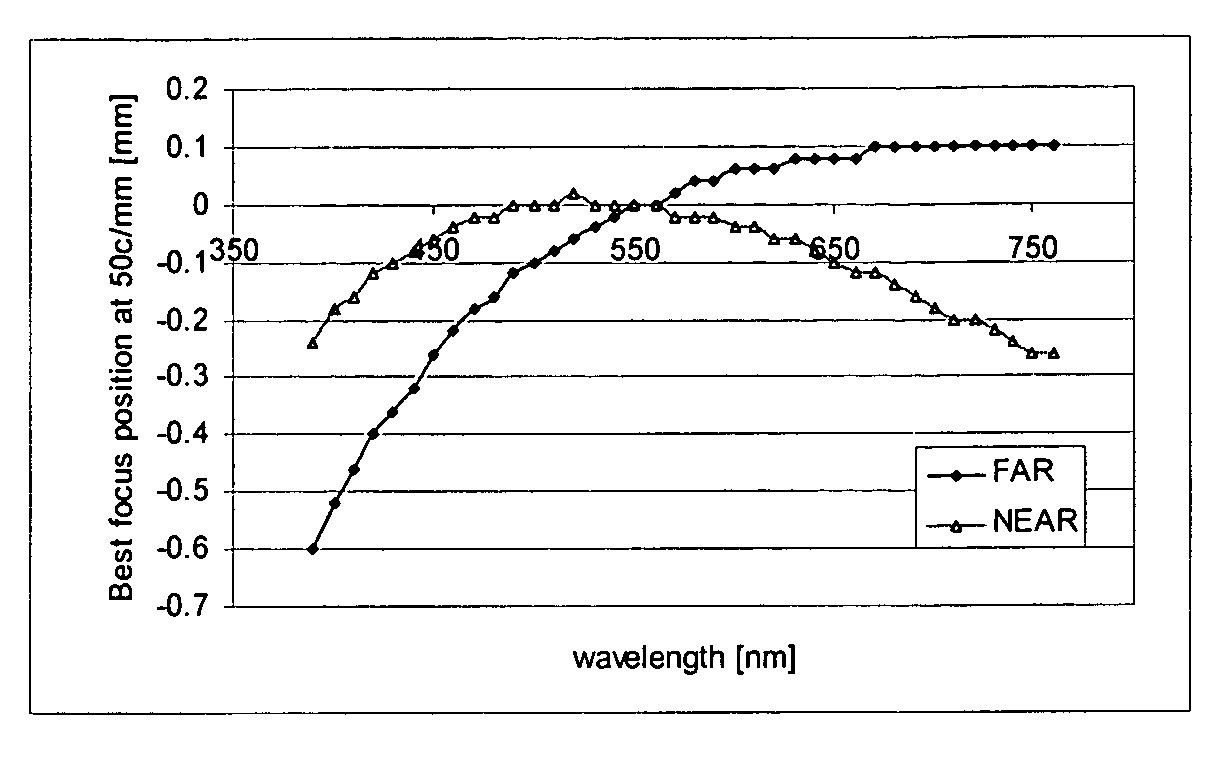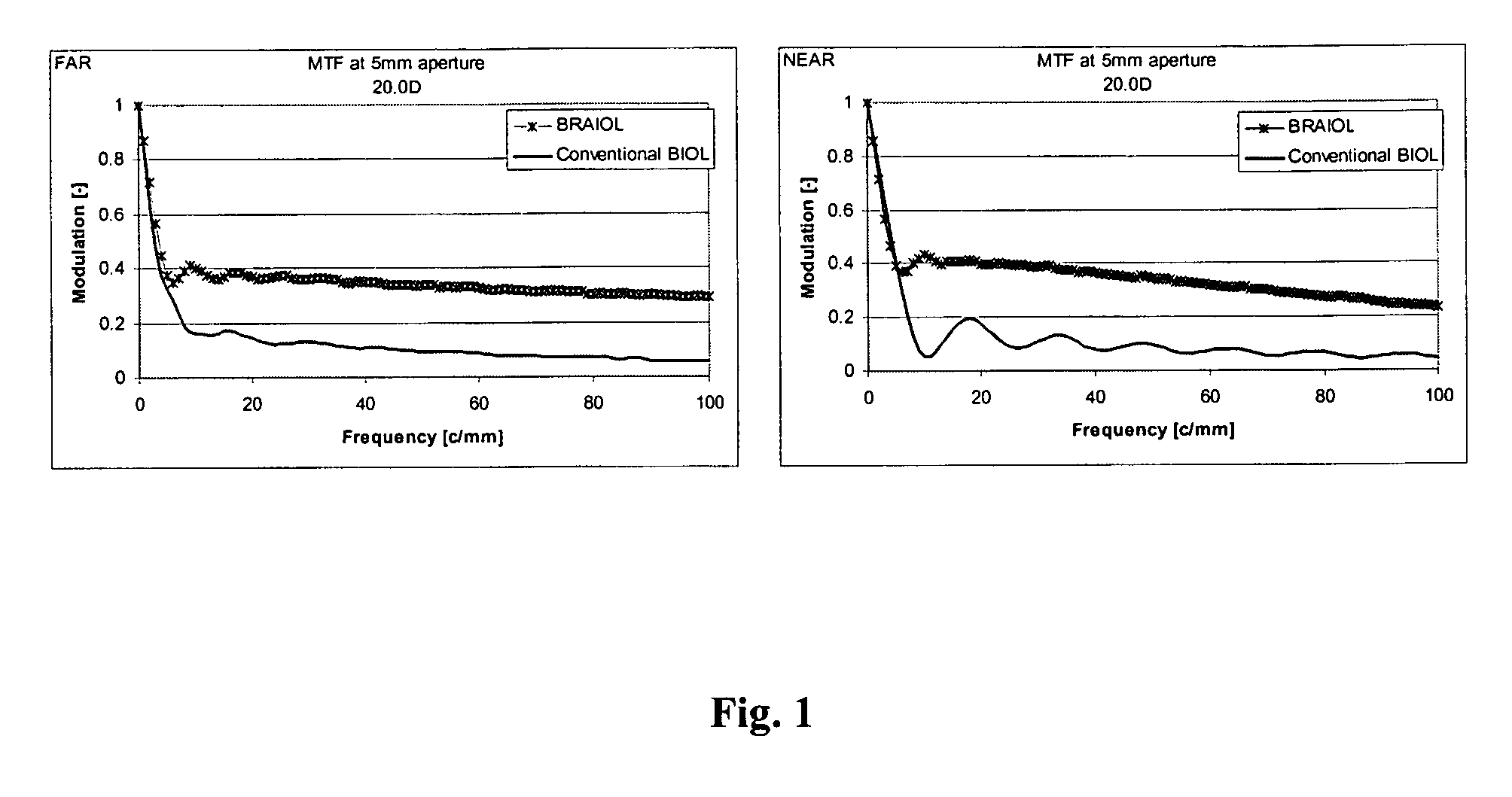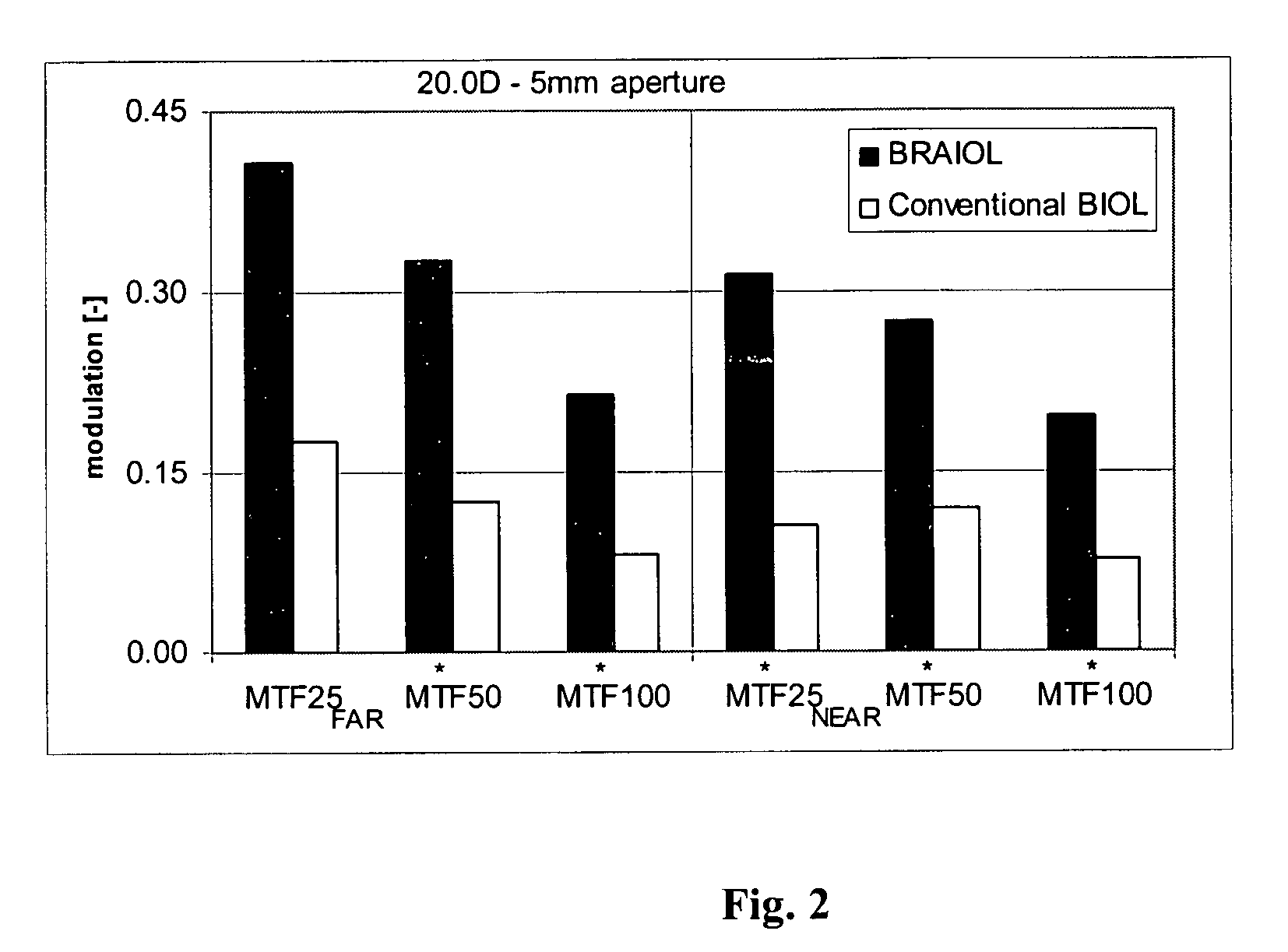Multifocal ophthalmic lens
a multi-focal, ophthalmic technology, applied in the direction of optical radiation measurement, spectales/goggles, instruments, etc., can solve the problems of reduced image quality, reduced visual quality in each focus, and vision defects, etc., to achieve the effect of improving visual quality
- Summary
- Abstract
- Description
- Claims
- Application Information
AI Technical Summary
Benefits of technology
Problems solved by technology
Method used
Image
Examples
example 1
[0101] In one embodiment, the lens is biconvex, having radii of curvature of 12.15 mm on both the anterior and posterior surface and a central thickness of 1.1 mm. The anterior surface is aspherized. In an iterative process, the aberration of the optical system of design cornea and bifocal IOL are optimised in order to reduce the wavefront aberration in the far focus position, in this example the Zernike term Z.sub.11, representing the spherical aberration. In this process, the asphericity of the anterior lens surface is used as the design parameter. The asphericity of the anterior surface is described by a conic constant. The sag equation of the anterior surface is: 4 S ( r ) = cv * r 2 1 + 1 -cv 2( cc + 1 ) r 2
[0102] wherein cc is the conic constant
[0103] Using commercially available optical design software, the variable cc can be optimized to minimize the Zernike term Z.sub.11 for the far vision focal point. The variable cc was determined for an aperture size of 5.1 mm. The anter...
example 2
[0104] In another embodiment, the lens is biconvex, having radii of curvature of 12.15 mm on both the anterior and posterior surface and a central thickness of 1.1 mm. The diffractive posterior surface is aspherized. In an iterative process, the aberration of the optical system of design cornea and bifocal IOL are optimised in order to reduce the wavefront aberration, in this example the Zernike term Z.sub.11, representing the spherical aberration, as well as the symmetrical higher order terms Z.sub.22 and Z.sub.37. In this process, the asphericity of the posterior lens surface is used as the design parameter. The asphericity of the posterior surface is described by a conic constant and 2 higher order terms. The total sag equation is: 5 S ( r ) =cv * r 21 + 1 -cv 2( cc + 1 ) r 2 + ad * r 4 + ae * r 6 + S d( r )
[0105] wherein:
[0106] cc is the conic constant
[0107] ad is the 4.sup.th order aspheric coefficient
[0108] ae is the 6.sup.th order aspheric coefficient
[0109] Using commercially...
example 3
Both
[0112] In another embodiment, the lens is biconvex, having an anterior radius of curvature of 12.15 mm, a posterior radius of curvature of 12.59 and a central thickness of 1.1 mm. The diffractive profile is located on the posterior surface and the anterior surface is aspherized. In an iterative process, the aberration of the optical system of design cornea and bifocal IOL are optimised in order to reduce the wavefront aberration, in this example the Zernike term Z.sub.11, representing the spherical aberration, as well as the symmetrical higher order terms Z.sub.22 and Z.sub.37. In this process, the asphericity of the anterior lens surface is used as the design parameter. The asphericity of the anterior surface is described by a conic constant and 2 higher order terms. The sag equation of the anterior surface is: 6 S ( r ) = cv * r 21 + 1 -cv 2( cc + 1 ) r 2 + ad * r 4 + ae * r 6
[0113] wherein:
[0114] cc is the conic constant
[0115] ad is the 4.sup.th order aspheric coefficient
[011...
PUM
 Login to View More
Login to View More Abstract
Description
Claims
Application Information
 Login to View More
Login to View More - R&D
- Intellectual Property
- Life Sciences
- Materials
- Tech Scout
- Unparalleled Data Quality
- Higher Quality Content
- 60% Fewer Hallucinations
Browse by: Latest US Patents, China's latest patents, Technical Efficacy Thesaurus, Application Domain, Technology Topic, Popular Technical Reports.
© 2025 PatSnap. All rights reserved.Legal|Privacy policy|Modern Slavery Act Transparency Statement|Sitemap|About US| Contact US: help@patsnap.com



